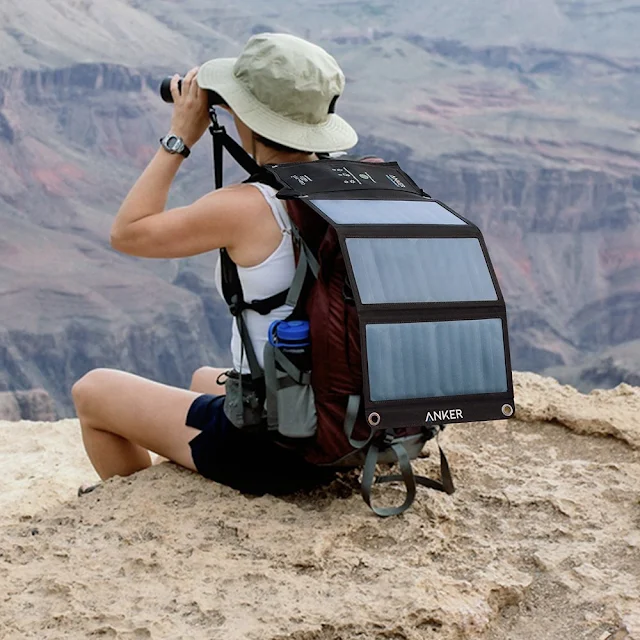🌞How to Charge Your Phone When the Power Goes Out: A Guide to Solar Chargers
In an age of uncertainty, doomsday preppers are often seen as eccentric, but they have one thing right: being prepared is smart. While most of us don't have a secret bunker, we can still take simple steps to ensure we're ready for an emergency. We stock up on essentials, but have you thought about how you'll charge your phone if there's a power outage?
I had a lightbulb moment (literally!) with this myself. I use small solar-powered lightbulbs in my shed, which has no electricity. One day, I noticed the charging port on the light's solar panel looked just like an Android port. On a whim, I tried charging my portable speaker with it, and it worked! The real test was my Lenovo tablet. Sure enough, on a sunny day, the little panel brought it back to life. This simple discovery made me realize that even a cheap and simple solar panel can be a lifesaver in a crisis.
The charging rate on my little panel was slow, but it was enough to power on a dead tablet. In an emergency, that's the difference between being able to send a text to a loved one and being completely cut off. It got me thinking about more robust options for emergency preparedness or even just for outdoor activities like hiking and camping.
The Science of Solar: How Do Solar Chargers Work?
A solar charger works through the **photovoltaic effect**. The solar panel is made up of photovoltaic cells (usually silicon) that absorb photons from sunlight. This energy excites electrons within the cells, causing them to flow and creating a direct current (DC) of electricity. The key factors that determine a panel's performance are:
- Wattage (W): This is the measure of the panel's total power output. A higher wattage means it can generate more power.
- Amperage (A): This is the measure of the electrical current. A higher amperage (like 2.1A) will charge your devices much faster.
A small, low-wattage panel might only be able to trickle-charge a device, while a larger, more efficient panel can charge nearly as fast as a wall outlet in direct sunlight.
🔋The Best Solar Chargers for Phones and Devices
There are plenty of robust solar charging options out there. One of the best and most popular is the Anker PowerPort Solar Lite. It comes with two USB ports, so you can charge two devices at once, whether they're Apple iPads or Android phones. You can also use it to charge power banks and other USB-powered devices.
Thanks to its large surface area, the Anker charger can generate up to 2.1 amps in direct sunlight, making it nearly as fast as a regular wall charger. As pictured above, you can have it on your backpack while hiking like Bear Grylls, or you can fold it up neatly in your pack next to your emergency personal locator beacon.
What Real Users Are Saying About the Anker Solar Charger:
Here are some reviews from Amazon from people who have relied on this charger in real-world situations:
"This thing is really saving my tail here in Puerto Rico after Hurricane Maria. I bought it after Irma only to have it arrive the day I regained power. Little did I know big sister Maria was lurking."
"I took it on a week long solo hiking trip in the backcountry and am absolutely happy with the performance and product. It charged my phone and a small power bank enough at lunchtime to keep going through the day and top up my GPS watch."
"Having two USB ports is one of the best features of this solar panel and makes it so much more convenient. It charges two phones on a clear day, albeit more slowly than standard power sources. It will even charge my phone a bit on a cloudy day."

